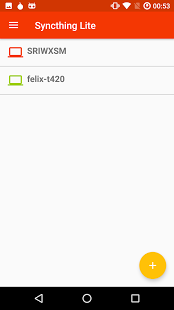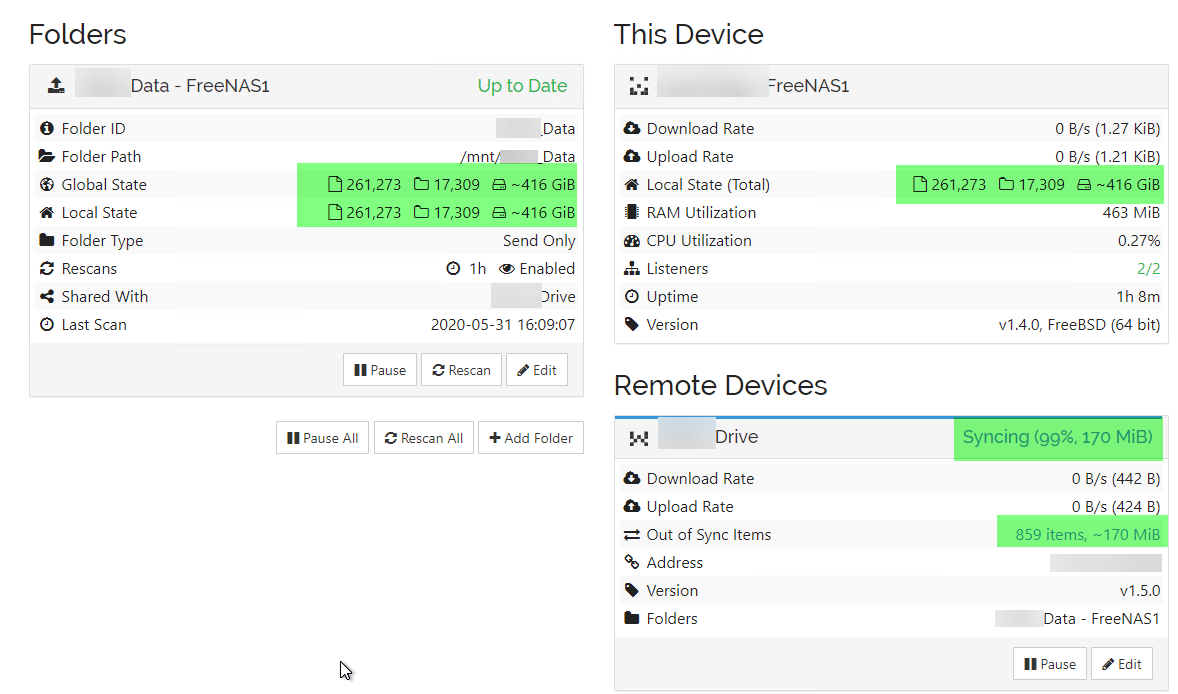

- #SYNCTHING FILE VERSIONING HOW TO#
- #SYNCTHING FILE VERSIONING MANUAL#
- #SYNCTHING FILE VERSIONING SOFTWARE#
- #SYNCTHING FILE VERSIONING FREE#
- #SYNCTHING FILE VERSIONING WINDOWS#
However, on November 17, the developer decided not to change Syncthing to Pulse and is no longer working with ind.ie. In October 2014 it was announced by the original author that Syncthing was being rebranded as "Pulse". The initial public binary release (v0.2) was made on 30 December 2013.
#SYNCTHING FILE VERSIONING WINDOWS#

But they have also done the work to make it all easy to set up and make use of - the place where a lot of free-software projects seem to fall down. The developers seem to have done the work to create a system that is capable, reliable, secure, and which performs reasonably well.

Moving and renaming of files and folders is handled efficiently, with Syncthing intelligently processing these operations rather than re-downloading data from scratch. Two different SHA256 hashing implementations are currently supported, the faster of which will be used dynamically after a brief benchmark on start-up. Syncthing offers send-only and receive-only folder types where updates from remote devices are not processed, various types of file versioning (trash can, simple or staggered versioning as well as handing versioning to an external program or script) and file/path ignore patterns.
#SYNCTHING FILE VERSIONING MANUAL#
GUI Wrappers can use these files to present the user with a method of resolving conflicts without having to resort to manual file handling.Įfficient synching is achieved via compression of metadata or all transfer data, block re-use and lightweight scanning for changed files, once a full hash has been computed and saved.
#SYNCTHING FILE VERSIONING HOW TO#
Ĭonflicts are handled with the older file being renamed with a "sync-conflict" suffix (along with time and date stamp), enabling the user to decide how to manage two or more files of the same name that have been changed between synching. All data, whether transferred directly between devices or via relays, is encrypted using TLS. Devices connecting to each other require explicit approval (unless using the Introducer feature) which increases the security of the mesh.

It supports IPv6 and, for those on IPv4 networks, NAT punching and relaying are offered.
#SYNCTHING FILE VERSIONING SOFTWARE#
Syncthing is a BYO cloud model where the users provide the hardware that the software runs on.
#SYNCTHING FILE VERSIONING FREE#
Syncthing is written in Go and implements its own, equally free Block Exchange Protocol.


 0 kommentar(er)
0 kommentar(er)
